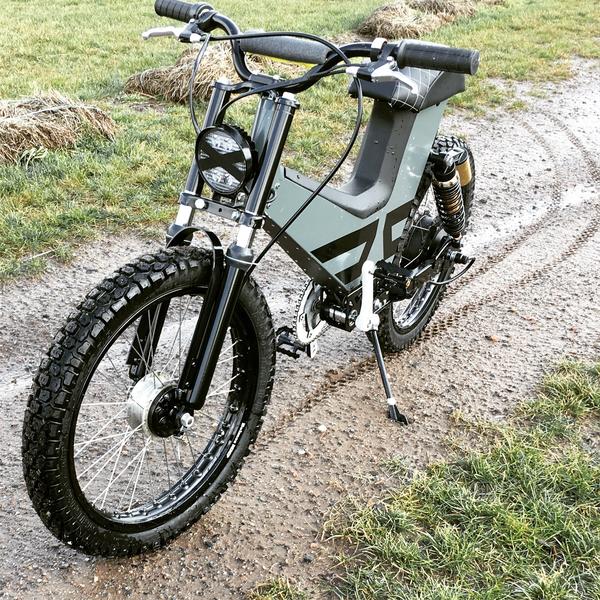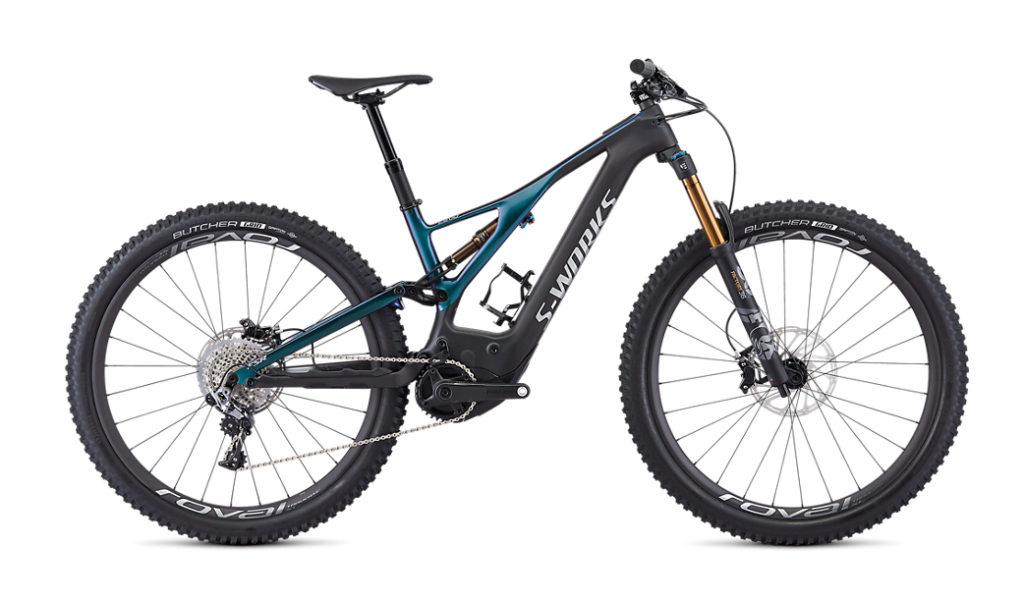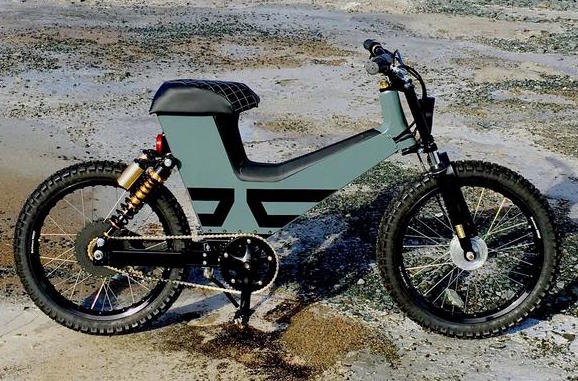Electric-motorized bicycles can help reduce traffic congestion, parking issues and maybe pollution. Plus, they are a lot of fun to operate. While they have obvious community benefits, I’ve never believed they belong on natural-surface trails shared by hikers, runners, mountain bikers and equestrians. Electric-motorized bikes are way too fast compared to others using these trails. If owners want an off-road experience, they belong in areas designated for Off-Highway Vehicles (OHV). The new Suru Scrambler represents everything I see wrong with allowing electric-motorized bicycles on non-OHV trails.
The Suro Scrambler, using motorcycle wheels, brakes and suspension, looks like a small motorcycle with pedals. So much so that Suro has instructions on how to deal with law enforcement while riding their bike. The added weight of motorcycle components needs more power so Suro takes their Scrambler up to the legal limit of 750-watts. That’s over twice the power of the bike used for our trail-user speed comparison and three times the power of the average electric-motorized bicycle.

Now that Suro has taken it to the limit, it forces others to either ante up or fold. State legislators who signed off on the 750-watt limit in the first place were fed bad information by special-interest groups. In comparison, Canada set a 500-watt limit and most European countries top out at 250 watts. It is not surprising. The American mantra for anything powered is “bigger is better” and Suro, a Canadian company, is more than happy to accommodate.
The Suro Scrambler represents everything I’ve objected to about allowing these vehicles on trails formerly designated as non-motorized trails. And what makes it worse, as far as I can tell, the Scramble is 100% legal under the way e-bike legislation is being crafted.

